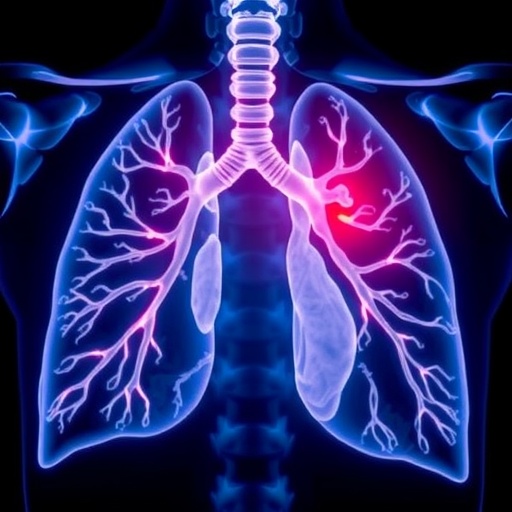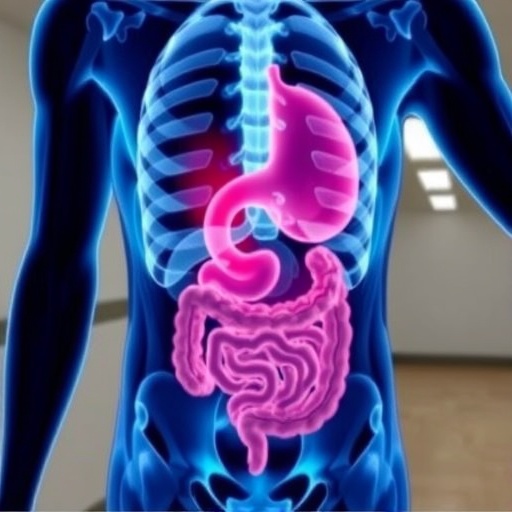
In a groundbreaking study poised to revolutionize breast cancer diagnostics, researchers have unveiled a novel approach that integrates dual-region MRI radiomic analysis to accurately predict malignant transformation risks in high-risk breast lesions. This advance stands at the intersection of precision medicine and cutting-edge imaging technology, potentially redefining how clinicians assess and manage these complex cases.
The clinical challenge addressed by this research lies in the unpredictable nature of high-risk breast lesions. While some of these lesions remain benign, others upgrade to malignancy upon surgical excision, creating a critical need for improved non-invasive diagnostic tools to stratify patient risk effectively. Traditional imaging and biopsy methods have exhibited limitations in accurately forecasting these pathological upgrades, leading to unnecessary surgeries or delayed treatment. The innovative use of radiomics — extracting vast quantitative data from medical images — provides a promising avenue to overcome these constraints.
This study leveraged dynamic contrast-enhanced magnetic resonance imaging (DCE-MRI), a sophisticated imaging modality that highlights blood flow differences within breast tissue, to derive both clinicoradiological characteristics and complex radiomic features. By delineating both intratumoral and peritumoral regions of interest (ROIs), the team hypothesized that combining data from tumor cores and their immediate microenvironment could capture crucial biological interactions indicative of malignancy risk.
Data from 174 patients with biopsy-confirmed high-risk breast lesions were retrospectively analyzed. These patients underwent preoperative MRI scans between 2019 and 2024 at Shenzhen People’s Hospital. To ensure robust model development and validation, the dataset was split into training and test sets at a 7:3 ratio. The high granularity enabled the researchers to build multiple radiomic models focusing on various spatial regions — the lesion itself and peritumoral areas extended outward by 3 mm, 5 mm, and 7 mm respectively.
Particularly striking was the performance of the peritumoral 3 mm radiomics model, which outperformed broader surrounding regions. This suggests that the immediate peritumoral microenvironment harbors critical imaging features that correlate with risk of morphological upgrade. These findings highlight the importance of not only looking within the tumor boundaries but also closely analyzing its proximal tissue milieu, which may reflect early infiltrative or reactive processes preceding malignant transformation.
Beyond isolated radiomic signatures, the study further integrated clinical and conventional imaging features, combining them with both intratumoral and peritumoral radiomics to construct a comprehensive predictive model. This dual-region combined model demonstrated exceptional diagnostic performance, achieving an AUC (area under the curve) of 0.883 in the training cohort and 0.851 in the independent test set. These metrics significantly surpassed the predictive power of models based solely on clinical data or individual radiomic features.
Diagnostic sensitivity, specificity, and accuracy of the combined model were also impressive. In the training group, these metrics were 79.4%, 82.7%, and 81.8% respectively, while the test cohort exhibited 72.7% sensitivity, 85.7% specificity, and 83.0% accuracy. Such balanced performance underscores the model’s potential utility in real-world clinical settings where minimizing both false positives and negatives is paramount to patient outcomes and healthcare resource optimization.
The researchers employed rigorous univariate and multivariate logistic regression analyses to identify independent risk factors for pathological upgrade. These statistical approaches ensured the integration of only the most relevant radiomic and clinical features into the final model, mitigating overfitting and enhancing generalizability. The result is a nuanced risk stratification tool anchored in biologically meaningful data representation.
This research also culminated in the design of a clinically applicable nomogram — a graphical calculation tool that synthesizes multiple predictive factors into an individualized risk score. Such a nomogram can provide oncologists and radiologists with an intuitive interface to estimate upgrade probabilities, guiding personalized treatment decisions, such as whether to proceed with surgical excision or adopt a watchful waiting strategy.
Importantly, the study’s retrospective multicenter framework and relatively large sample bolster confidence in the findings, though prospective validation across diverse populations remains essential before widespread clinical adoption. The methodology, based on automated ROI delineation and multi-scale radiomic feature extraction, lays a replicable foundation for future investigations into other cancer types and lesion-risk assessments.
From a technological standpoint, the dual-region radiomic approach breaks new ground by recognizing the peritumoral environment as a critical player in oncogenesis and tumor progression. This paradigm shift broadens the imaging biomarker landscape and reflects trends in tumor microenvironment research, which increasingly reveal how surrounding stromal and immune components influence cancer behavior.
Given the rapid evolution of artificial intelligence and machine learning algorithms in medical imaging, this study exemplifies how advanced computational analytics can enable precision oncology. By harnessing subtle imaging textures, shape descriptors, and signal intensity variations imperceptible to the human eye, radiomics enhances diagnostic accuracy and unlocks new insights into tumor biology.
The clinical implications are profound. Accurate preoperative risk assessment helps avoid overtreatment in patients with benign high-risk lesions and conversely ensures timely intervention for those on the verge of malignant transformation. Moreover, this approach can reduce patient anxiety, limit unnecessary invasive procedures, and optimize healthcare resource allocation.
In a broader context, such advances contribute to the shifting landscape from “one-size-fits-all” cancer care to individualized management protocols based on precise phenotypic information. Incorporating quantitative radiomic signatures with clinical parameters exemplifies the future of multi-omic integration, potentially paving the way for more personalized, data-driven diagnostic and therapeutic pathways.
As the cancer research community continues to unravel the complexity of tumor heterogeneity and its clinical ramifications, studies like this underscore
Tags: breast cancer risk predictionclinicoradiological characteristics in diagnosticsdual-region MRI technologydynamic contrast-enhanced MRIhigh-risk breast lesions assessmentimaging biomarkers for breast cancerintratumoral and peritumoral analysismalignant transformation predictionnon-invasive diagnostic tools for cancerovercoming limitations in breast cancer imagingprecision medicine in breast cancerradiomic analysis in oncology





